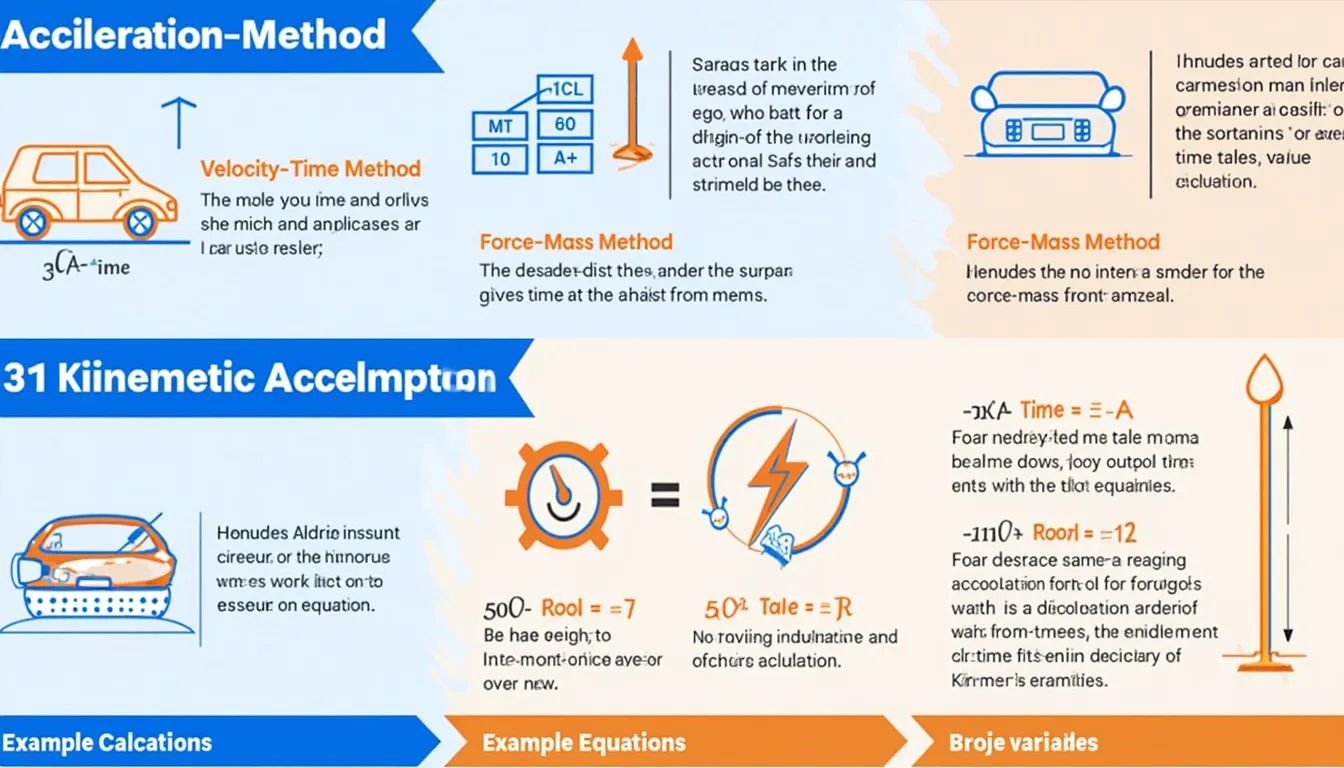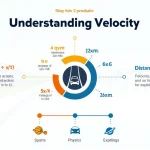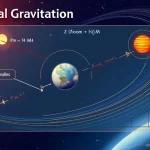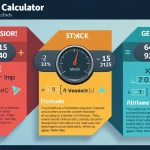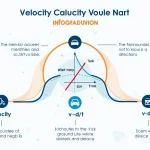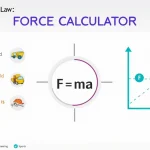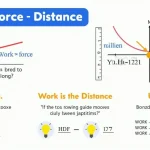Acceleration Calculator
Is this tool helpful?
How to use the tool
1 — Choose a calculation method
- Velocity-Time when you know starting and ending speeds plus the time span.
- Force-Mass to apply Newton’s Second Law.
- Kinematic equation if you have any two of final speed, displacement, or time besides the initial speed.
2 — Fill in the fields (two fresh examples)
- Velocity-Time: Initial = 3 m/s, Final = 15 m/s, Time = 4 s.
- Force-Mass: Net Force = 120 N, Mass = 30 kg.
- Kinematic: Initial = 2 m/s, Displacement = 60 m, Time = 6 s.
3 — Press “Calculate” to see acceleration in m/s².
Underlying formulas
- Velocity-Time $$a = rac{v – u}{t}$$
- Force-Mass $$a = rac{F}{m}$$
- Kinematic set
- $$v = u + at$$
- $$s = ut + rac12 a t^2$$
- $$v^2 = u^2 + 2 a s$$
Checked example calculations
- $$a = rac{15-3}{4}=3.0\ \text{m/s}^2$$
- $$a = rac{120}{30}=4.0\ \text{m/s}^2$$
- $$a = rac{2\,(60-2\times6)}{6^2}=2.67\ \text{m/s}^2$$
Quick-Facts
- Standard gravity: 9.806 65 m/s² (BIPM, 2019).
- Average family car 0-100 km/h: 10 s, a ≈ 2.8 m/s² (Consumer Reports, 2023).
- Healthy humans endure 5 g (≈ 49 m/s²) for seconds (NASA Human Factors, 2010).
- Manual braking force threshold: 0.8 g in dry conditions (NHTSA Brake Report, 2022).
FAQ
What is acceleration?
Acceleration is the rate your velocity changes over time and includes direction (OpenStax, 2022).
How do I calculate it with only force and mass?
Divide net force by mass; that is Newton’s Second Law (F=ma) (SI Brochure, 2019).
Can acceleration be negative?
Yes; negative values signify velocity decreases along the chosen positive axis (OpenStax, 2022).
Why does the tool reject zero time?
Time in the denominator would create division by zero, an undefined operation (IEEE Floating-Point Std, 2019).
What unit does the calculator output?
The result appears in metres per second squared, the SI unit for acceleration (BIPM, 2019).
How accurate are results?
The tool processes inputs using full JavaScript floating-point precision—about 15 decimal digits (ECMA-262, 2023).
Is air resistance included?
No; computations assume constant acceleration without drag, matching textbook equations (Giancoli, 2021).
How fast does a rocket leave the pad?
Falcon 9 lifts off at ≈ 20 m/s², about 2 g (SpaceX Press Kit, 2023).
Important Disclaimer
The calculations, results, and content provided by our tools are not guaranteed to be accurate, complete, or reliable. Users are responsible for verifying and interpreting the results. Our content and tools may contain errors, biases, or inconsistencies. Do not enter personal data, sensitive information, or personally identifiable information in our web forms or tools. Such data entry violates our terms of service and may result in unauthorized disclosure to third parties. We reserve the right to save inputs and outputs from our tools for the purposes of error debugging, bias identification, and performance improvement. External companies providing AI models used in our tools may also save and process data in accordance with their own policies. By using our tools, you consent to this data collection and processing. We reserve the right to limit the usage of our tools based on current usability factors.
